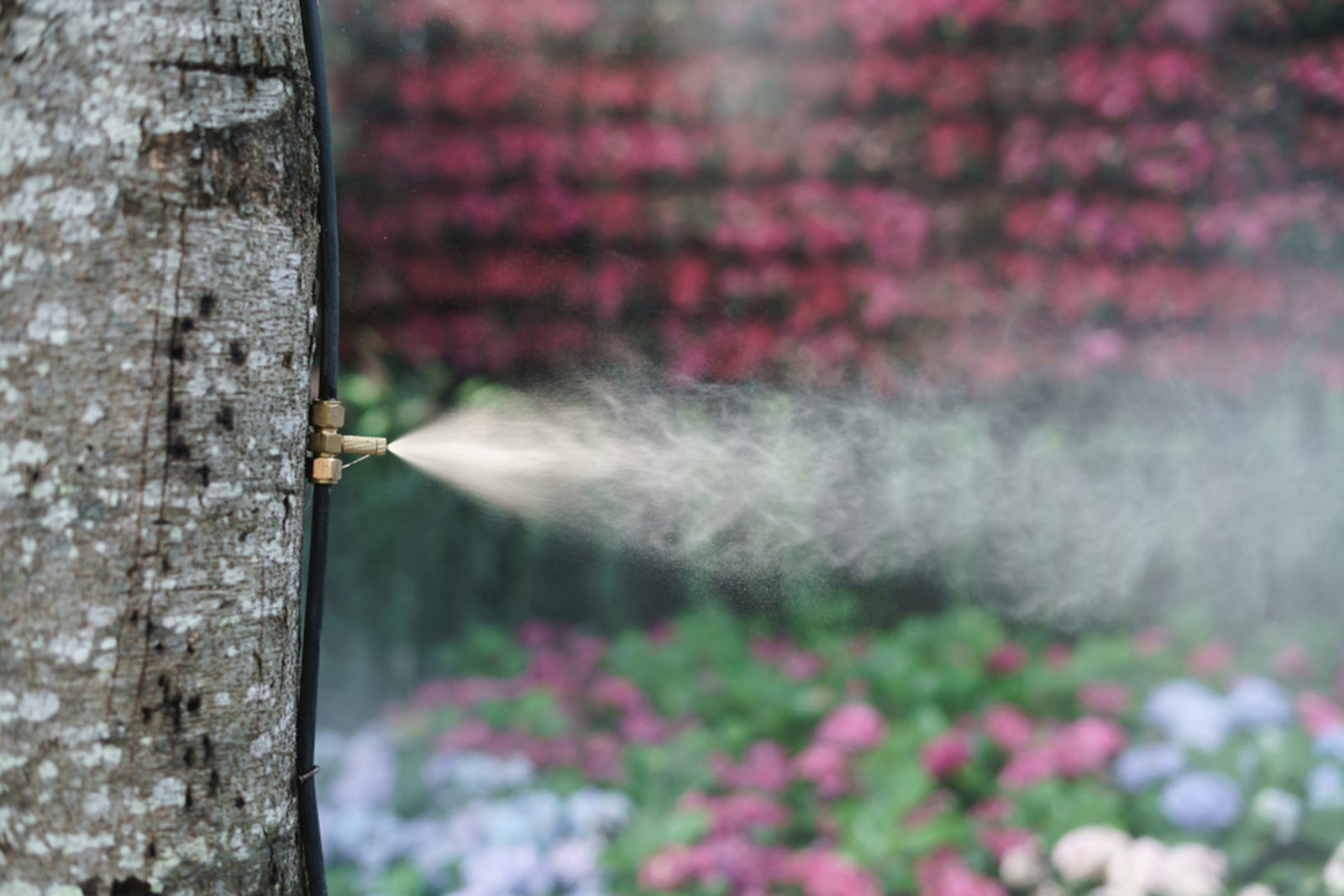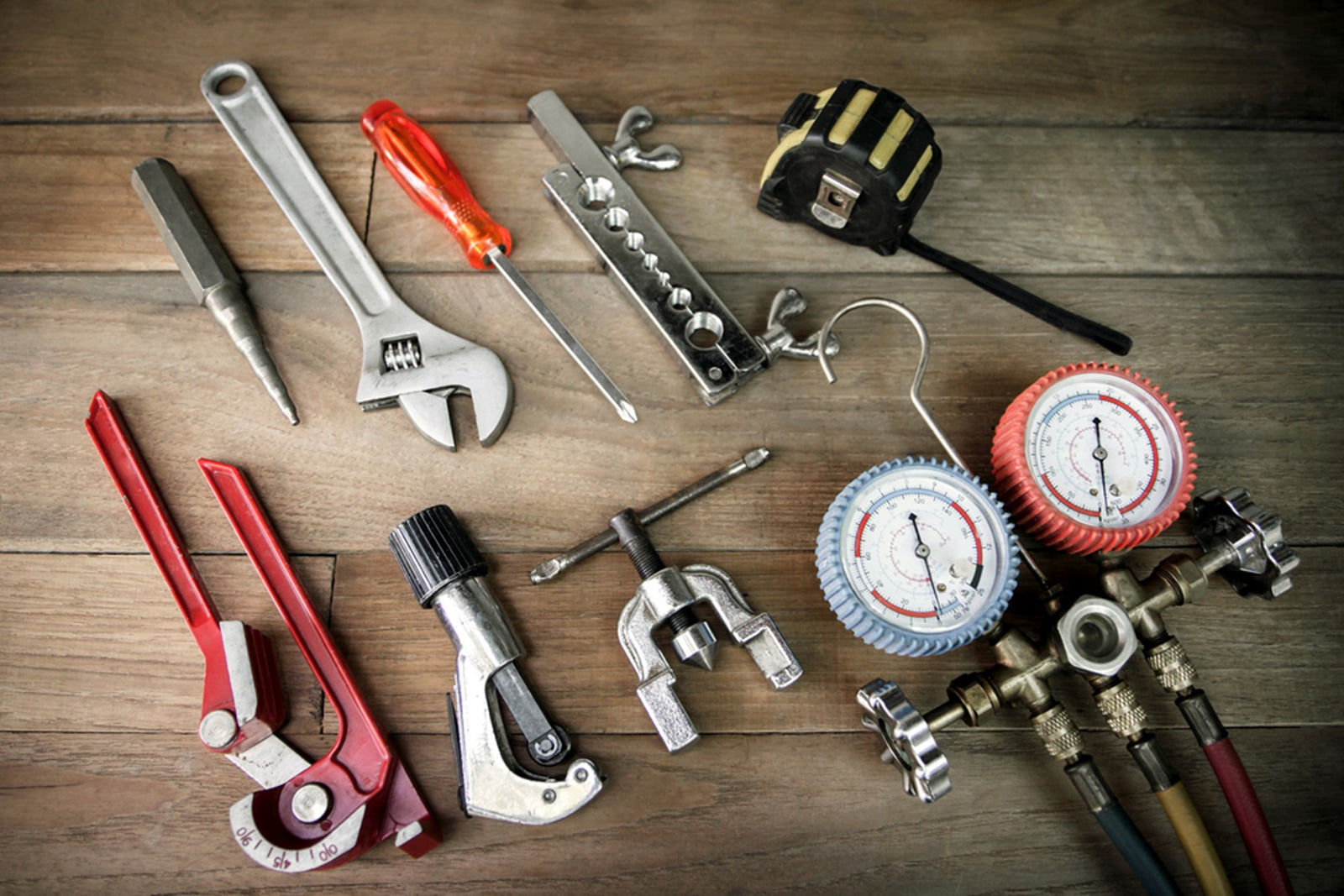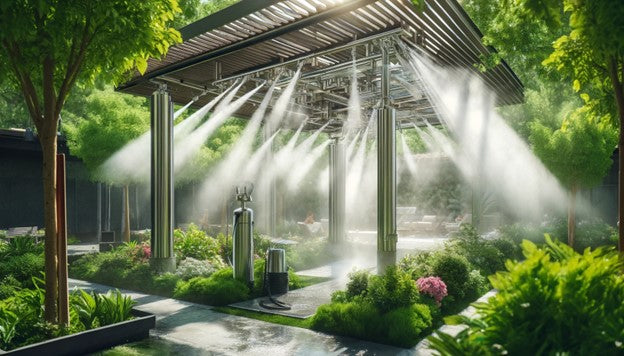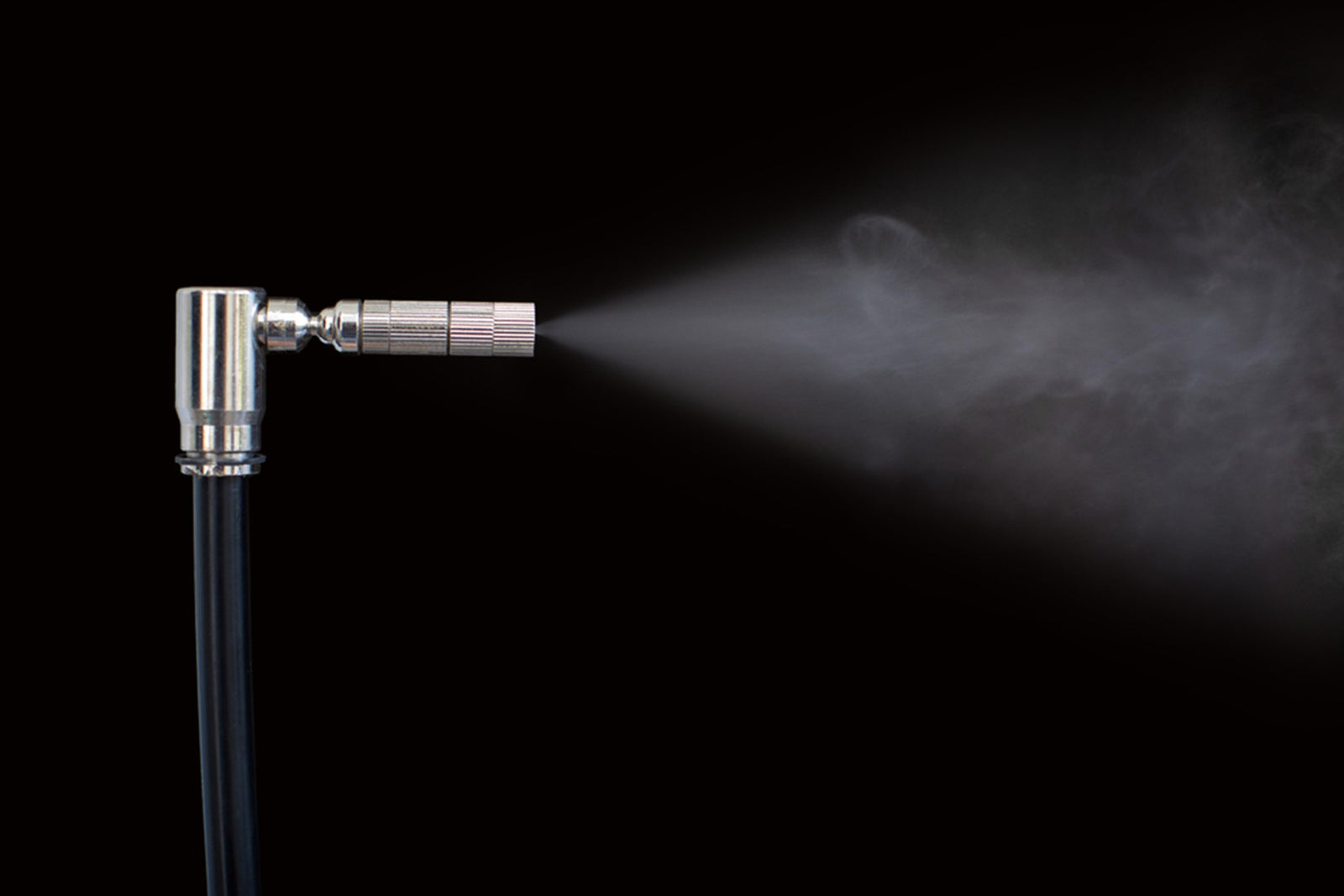
Misting System Maintenance Guide: Everything You Need to Know
Getting a proper misting system is an investment you’ll appreciate every single hot season. However, you can’t just set it up and forget about it.
There isn’t much you need to do to maintain your misting system and keep it running well for as long as possible, but there are a few steps you must take.
First, we’ll talk about general maintenance, and then we’ll go on to the highly important winterization.
Let’s get started.
General Maintenance Guidelines
These are the general maintenance steps you’ll always need to take for your misting system if you want to preserve its quality for years to come. Luckily, misting systems aren’t overly complex, and these general misting system maintenance steps are very simple. You should only need to check any of these three things once per week of active use, before starting up your misting system for the season, and before shutting down your system for the winter.
1: Clean Nozzles
First and foremost, you need to make sure your misting nozzles are clean at all times. Before you set up your misting system for the year, about once a week or so while it’s active, and before packing it away for the winter, you need to check and make sure the nozzles are in good order.
Minerals build up in the nozzles regardless of whether or not you have a water filter. Look for buildup around each nozzle, and if you see any, clean it out. You can do this by taking the nozzle apart and submerging it into white vinegar.
2: Check for Leaks
Now, you need to check for leaks. This should be done anytime you get the chance, and you should definitely do it if you notice a problem with your misting system’s performance. Don’t worry. This only takes a minute or two, because you just need to walk along the system’s tubing and see if you notice any water spewing out of somewhere it isn’t supposed to.
Start where the tubing comes out of the pump, and just do a simple walk along the tubing to see if you notice anything. If not, you’re good to go.

3: Maintain the Pump
The pump is the most complex part of your unit. If you notice it’s making odd noises, it’s not creating enough pressure, or anything else, start by checking the filter and its connections. Next, make sure there is no trapped air inside the pump or inlet tubing. Air must be purged, or otherwise the pump will make loud noise and will not be able to pressurize the system. If fixing those issues doesn’t resolve the problem, take the pump in for repairs.
For pumps that require oil change, replace pump oil per manufacturer's recommendations.
Winterizing Your High-Pressure Misting System
This is the form of maintenance you really need to pay attention to. While the three previous tips are necessary (except the oil change which is mandatory), this is where the majority of problems are likely to take place. The other tasks are just precautionary.
Luckily, while this is more demanding than just maintaining your misting system during normal times, it’s still fairly straightforward.
The vast majority of this process is solely to protect against freezing weather conditions. Since a misting system is a complex series of lines pumping water through exceptionally small nozzles and valves, any small amount of freezing can create massive problems for the system as a whole.
Here’s how to protect against that.
1: Storing the Pump
First and foremost, you can go ahead and remove your pump from the system. Drain any residual water from the pump and then store it in a place where the temperature will always be above freezing. Your garage, or somewhere within your home is an ideal space for this.
Beyond that, your misting pump is properly taken care of, and you won’t have to worry about any winter problems.

2: Clear the Lines
Step two is where most of the real work comes in. You need to clear your lines of ALL water.If the water in your lines or residual water in your nozzles is allowed to freeze, it can cause a lot of damage to the entire system.
Start by cleaning your nozzles like you should be doing normally, just to make sure they’re clear, and you’re not putting them away with a bunch of gunk caked to them.
Then, it’s time to flush the system.If your misting cooling system is at one level, you can simply use a #1 Phillips screwdriver to depress the auto-close flap in the drainage valve and let the excess water drain out with gravity. This can take a while. You want every drop to be out of your tubing and nozzles.
Of course, there is a situation where that might not be enough. If you have a system that is set to multiple levels or is exceptionally large, you might need to add compressed air to the mix to fully flush it out.
This is a complex step that can damage your system if done improperly. So, we recommend calling us if you need to do it. We’ll walk you through the whole process.
There’s no need to remove your misting system’s piping from its mounts. So, you’re finished with that part once you’ve flushed out the excess water.
3: Remove and Store Nozzles
First, if your system has steel or polymer nozzles, you can completely skip this step. They’ll be fine outdoors unless they have water in them.
Unfortunately, the really nice ceramic nozzles really need to come inside. They break if left in the extreme cold for a long period of time, and if there is any trace of water on them, the freezing and defrosting period will force them to crack.
You’ll want to remove your nozzles and take them indoors until you reach another warm season. This is simple, but it can be time-consuming.
Maintain Your Misting System for Longevity
If you fail to follow these steps in maintaining your misting system, you can expect it to fail long before its expected lifespan is up. Most of these steps are extremely easy, and you’ll only have to put a decent amount of time into maintaining your system if you have a complex piping system or ceramic nozzles.




